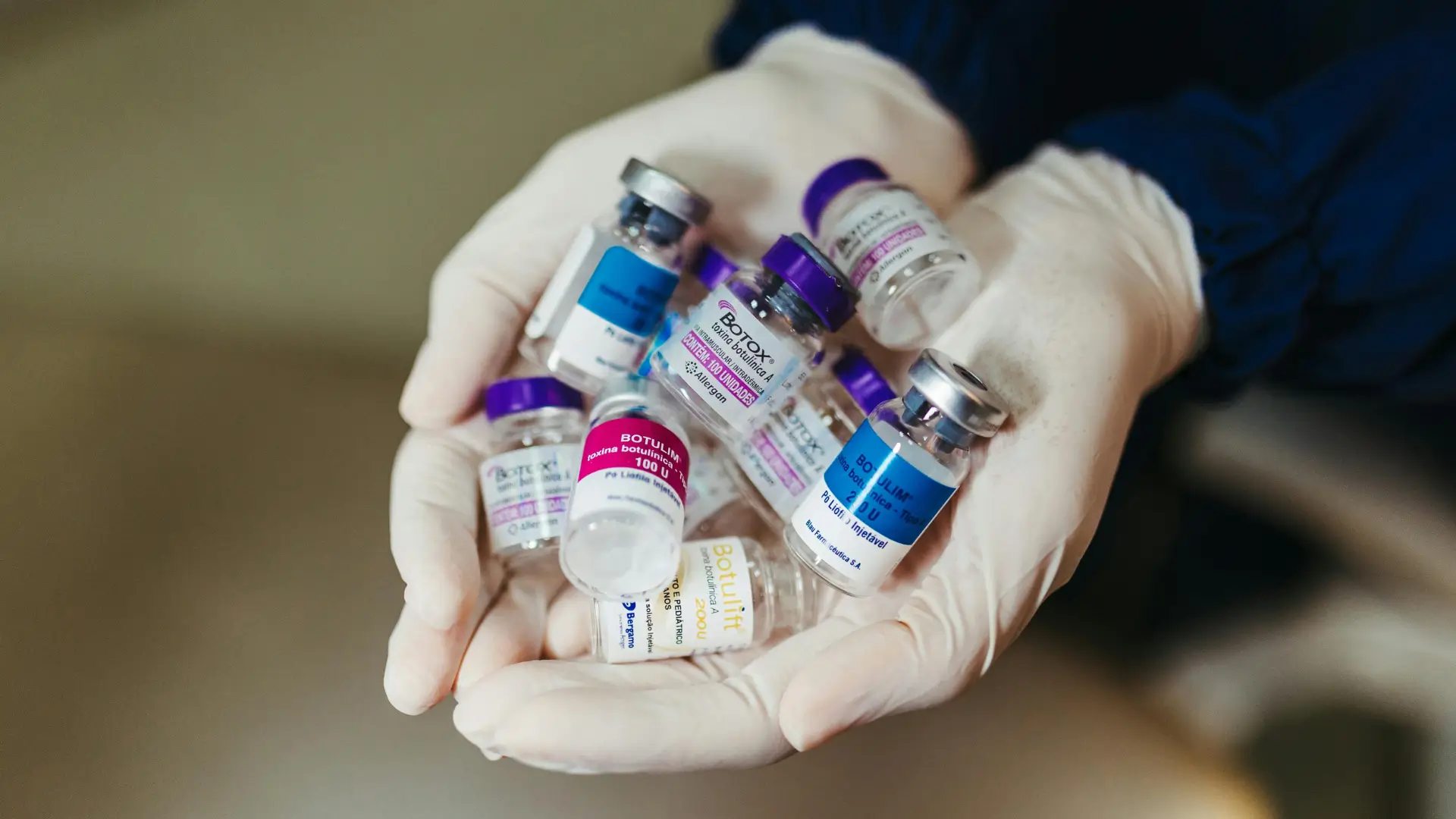Did you know that side effects from botulinum toxin injections are common but often mild and temporary? A review of over 9,000 patients found that common side effects after cosmetic treatments with botulinum toxin type A (the ingredient in products like Innotox) include things like redness, swelling, pain at the injection site, and even minor headaches. While these reactions typically go away quickly, it’s essential for clinicians and patients to stay informed about potential side effects, especially when using newer formulations like Innotox.
Innotox, which comes from South Korea, is a purified version of botulinum toxin that is designed to reduce immune system reactions. However, it’s still crucial to understand its specific side effects and how to manage them. By knowing what to expect, patients can feel more comfortable with the treatment, and healthcare providers can ensure the best results.
In this article, we will look at the full range of potential Innotox side effects, explore why they happen, and offer practical tips on how to prevent or manage these reactions, ensuring a safe and satisfying experience for patients.
Key Takeaways
- Most Innotox side effects are mild and transient, including pain at the injection site, swelling, headaches, and eyelid heaviness. These typically resolve within a few days to a week.
- Rare but serious side effects include anaphylaxis, dysphagia, and muscle weakness. These can be minimized with proper screening and patient monitoring, especially for individuals with certain medical conditions.
- Patient-specific factors such as age, immunoresistance, and medical history must be considered when determining the correct Innotox dosage and treatment plan for optimal results.
- Innotox offers advantages over Botox, as it is ready-to-use, reducing the risk of dilution errors and immunogenicity.
- For optimal safety and effectiveness, practitioners should follow established injection techniques, dose guidelines, and monitor patients for potential adverse reactions post-treatment.
- Innotox provides natural-looking results with minimal downtime when administered correctly by a trained healthcare provider.
About: Medica Depot is your trusted all-in-one supplier, offering a range of high-quality medical injectables and supplies. If you’re looking to buy Innotox, contact Medica Depot’s sales representatives and they will guide you on how to do so. Whether for health professionals, plastic surgeons, dermatologists, licensed estheticians, or other specialists, we can offer genuine, brand-name products you may need. With Medica Depot, we prioritize serving you better to improve the patient’s quality of life.
Common and Mild Reactions to Innotox

When it comes to botulinum toxin treatments, like Innotox, it’s important for patients to be aware of potential side effects. By discussing these common reactions upfront, patients can make informed decisions and feel more at ease about their treatment.
The most frequently experienced side effects after Innotox injections are typically mild and transient. These include:
- Pain at the needle entry point
- Mild swelling
- Bruising
- Headaches
- Eyelid heaviness (ptosis)
- Minor facial asymmetry
These reactions are often the result of needle trauma, not the toxin itself, and usually resolve within a few days to a week. Cold compresses can be applied to help reduce swelling, and over-the-counter medications can be recommended to manage pain and discomfort.
Being proactive about these mild effects and providing patients with clear aftercare instructions helps to keep them comfortable and confident throughout their Innotox treatment journey.
Rare but Serious Side Effects Linked to Innotox

Although rare, serious side effects can occur, especially if the treatment protocol or the Innotox injection sites aren’t managed correctly. Here are some of the more severe reactions that could arise:
- Anaphylaxis, including symptoms like hives, swelling, and breathing difficulties
- Dysphagia (difficulty swallowing) or trouble breathing due to the spread of the toxin
- Generalized muscle weakness extending beyond the targeted treatment area
To minimize these risks, healthcare professionals should thoroughly screen patients before treatment. Here are a few tips for reducing the chance of serious side effects:
- Keep emergency protocols in place, including epinephrine and airway management equipment, on-site at all times.
- Monitor patients for at least 30 minutes after injections in a controlled setting.
- Instruct patients to seek immediate medical attention if they experience symptoms like chest tightness, severe shortness of breath, or noticeable muscle weakness.
By staying prepared and informed, practitioners can minimize the chances of these rare but serious side effects occurring during Innotox treatments.
Patient Risk Factors That May Influence Innotox Response
Everyone’s body reacts differently to treatments, so understanding patient-specific factors is key to achieving the best results while ensuring safety. Some factors that may influence how a patient responds to Innotox injections include:
- Demographic Variables: Older adults, for example, may have reduced muscle bulk and therefore may need lower doses. In contrast, patients with higher body weight might require small adjustments in dosage to ensure even toxin distribution across the treatment area.
- Immunoresistance Management: If patients have had repeated high-dose botulinum toxin treatments, their bodies might produce neutralizing antibodies that reduce the toxin’s effectiveness. Innotox’s protein-free formulation minimizes this risk, which can be a significant advantage over other botulinum toxin options.
- Medical and Treatment History: Pre-existing dermatologic conditions (like eczema or open lesions) can affect how the toxin is absorbed. Additionally, understanding a patient’s past experiences with botulinum toxin injections can help tailor the right dosage and technique for better results.
How Innotox Safety Compares to Botox and Other Toxins

Innotox, approved by South Korea’s Ministry of Food and Drug Safety, is specifically formulated to target glabellar lines (the area between the eyebrows). Its unique design omits human serum albumin and uses a synthetic stabilizer, which reduces the risk of immunogenicity—a common concern with other botulinum toxin products.
In contrast, Botox contains accessory proteins and requires reconstitution, which can sometimes introduce dosing errors despite its long-standing stability. Innotox’s formula, being ready-to-use, ensures greater accuracy and fewer dilution mistakes.
When it comes to ensuring effective outcomes while minimizing risks, practitioners should:
- Begin with conservative dosing based on both the patient’s characteristics and the treatment area.
- Follow standardized injection techniques and protocols for spacing.
- Monitor patients for early signs of any adverse reactions.
By following these steps, both Innotox and Botox can provide natural-looking results with a strong safety profile, but Innotox offers a simpler preparation process.
Conclusion
Innotox offers a reliable, safe option for those seeking to reduce dynamic wrinkles like glabellar lines and crow’s feet. While most side effects are mild and transient, it’s crucial for both patients and practitioners to understand the potential risks. Serious side effects are rare but can occur if proper protocols aren’t followed.
Clinicians should assess each patient’s unique risk factors and ensure thorough screening prior to treatment. With appropriate management, Innotox can deliver beautiful results that enhance facial expression while minimizing side effects.
FAQs
1. What common side effects can occur with Innotox treatments?
Common side effects include pain at the injection site, mild swelling, bruising, headaches, and eyelid heaviness. These effects are usually mild and resolve within a few days.
2. What rare but serious side effects should patients be aware of?
Patients should watch for severe reactions, such as anaphylaxis, difficulty swallowing, or muscle weakness. These can occur if the treatment is not administered properly or contraindications arise.
3. How can practitioners minimize the risks associated with Innotox?
Practitioners can minimize risks by thoroughly screening patients, using conservative dosing, and closely monitoring for any adverse reactions after treatment.
References
Sethi N, Singh S, DeBoulle K, Rahman E. A Review of Complications Due to the Use of Botulinum Toxin A for Cosmetic Indications. Aesthetic Plastic Surgery. 2020;45. doi:https://doi.org/10.1007/s00266-020-01983-w
Yiannakopoulou E. Serious and Long-Term Adverse Events Associated with the Therapeutic and Cosmetic Use of Botulinum Toxin. Pharmacology. 2015;95(1-2):65-69. doi:https://doi.org/10.1159/000370245









